The 9T65 9-speed automatic transmission (RPO M3V, M3W) replacement pilot program (U.S.) for the 2018-2022 Enclave, Traverse; 2019-2022 Blazer; and 2020-2022 Acadia, XT5, and XT6 models concluded on September 30, 2021. (Fig. 1) Based on the results of the pilot program, several new diagnostic and repair procedures have been developed for low-mileage transmissions. All of these changes are covered in the latest version of Bulletin #20-NA-136.
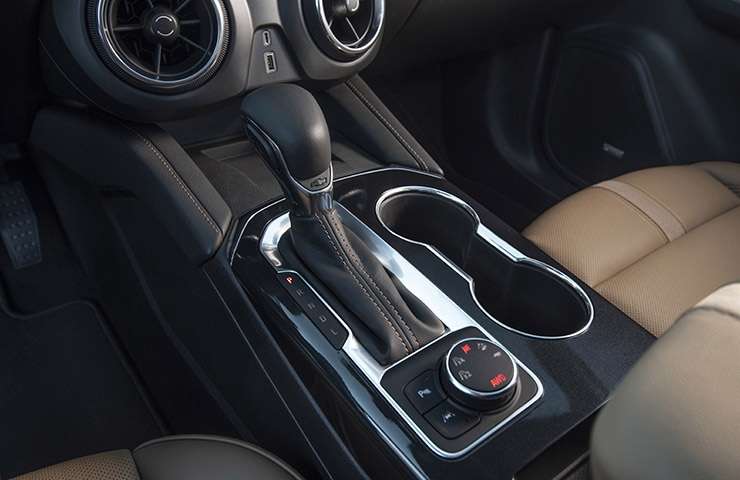 Fig. 1
Fig. 1
The pilot program, designed to reduce the number of days needed to complete transmission repairs, called for transmission assembly replacement (following the necessary guidelines) instead of making internal transmission repairs. With the end of the pilot program, mandatory transmission assembly replacement is no longer authorized.
Updated Bulletin #20-NA-136 provides an enhanced diagnostic and repair strategy that has been developed through the information and learnings gathered from the teardowns and inspections of transmissions returned as part of the program. The intent of the new procedures, as with the pilot program, is to reduce the number of days to complete the vehicle repair and reduce the potential for repeat repair visits.
TIP: Updated diagnostic information covered in the bulletin applies only to vehicles with less than 12,000 miles (19,000 km).
Repair Strategy
To determine the repair strategy on a 9T65 transmission (Fig. 2), begin diagnosis by first reviewing several previously released bulletins covering 9T65 transmission operating and performance conditions, including shift, sound and vibration concerns. For a complete list of the bulletins as well as other Service Information documents to review, refer to Bulletin #20-NA-136.
 Fig. 2
Fig. 2
The bulletin outlines the necessary steps to take to diagnose various 9T65 transmission concerns. In addition to documenting the condition, cause, and correction information, diagnosis should include:
- Check modules for DTCs
- Check the transmission fluid and level
- Check line pressure
- Perform a road test
- Check current DTCs or DTCs that reset during the road test
Fluid Levels
The transmission fluid level as well as the condition of the fluid should be checked as part of the diagnostic procedure. With the vehicle off and the transmission fluid temperature at approximately 68–77°F (20–25°C), there must be at least enough fluid to drain out of the fluid level hole (Fig. 3), which ensures there is enough fluid in the sump to fill components once the vehicle is started.
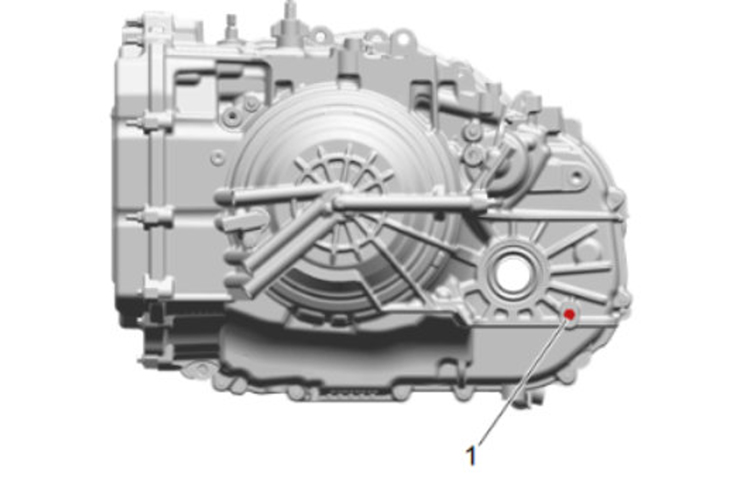 Fig. 3
Fig. 3
To check the transmission fluid level, the transmission fluid temperature (TFT) must be 185–203°F (85–95°C). Setting the fluid level with a TFT outside this temperature will result in either an under- or over-filled transmission. An under-filled transmission will cause premature component wear or damage. An over-filled transmission will cause fluid to discharge out the vent tube, fluid foaming, or pump cavitation.
If the fluid level is correct, check the condition of the fluid. The color of the fluid should be red or brown. It also should be transparent to the point where objects or writing can be seen through it. Refer to Bulletin #20-NA-136 for examples of acceptable fluid.
When inspecting the fluid, it’s also normal to see a small amount of friction material or metal from the manufacturing process (observed as fine sliver streaks) in the fluid. Excessive amounts of particles should be noted on the repair order and would require an internal transmission inspection.
Road Test
The road test procedures verify proper gear engagement. Check the garage shifts for each gear position. The gear engagements should be immediate and not harsh. Harsh engagements may be caused by high engine idle speed, default conditions caused by certain DTCs or incomplete or incorrect adapting.
If there is a delayed engagement of a gear shift, possible causes to check include low idle speed, low fluid level, cold TPT temperature, selector linkage or incomplete or incorrect adapting.
Upshifts and downshifts also should be checked during a road test. The TCM calculates shift points based on throttle position and vehicle speed. The bulletin lists the scan tool parameters to monitor as the transmission shifts. There should be a noticeable shift feel or engine speed change within 2 seconds of the commanded gear change. Follow the appropriate Service Information for any harsh, soft or delayed shift or slipping as well as any noise or vibration conditions.
TIP: If it’s difficult to determine if any transmission shifting conditions are internal transmission issues or input/command concerns, use the control function feature in GDS2 to command all shifts. If the transmission shifts into each range commanded, the condition is generally an input/command concern. If ranges are not completed when using GDS2 to command, the condition is generally an internal transmission concern.
Check all DTCs
The updated bulletin includes a list of all DTCs to look for during a road test. If any of the DTCs listed are set, follow the instructions in the bulletin for the specific DTCs. Some DTCs, either with or without a transmission fluid condition, may indicate damage to the clutch plates while others may point to replacement of the solenoid body or valve body.
For additional information about 9T65 transmission diagnosis as well as updated labor operations, refer toBulletin #20-NA-136.
– Thanks to Mark Kevnick






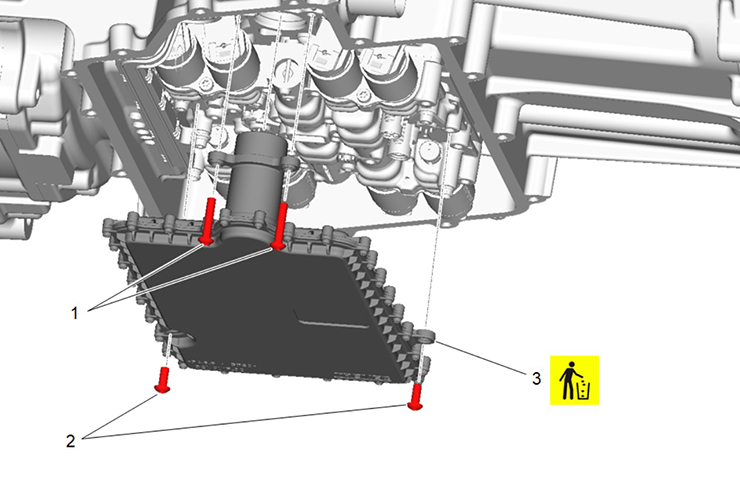

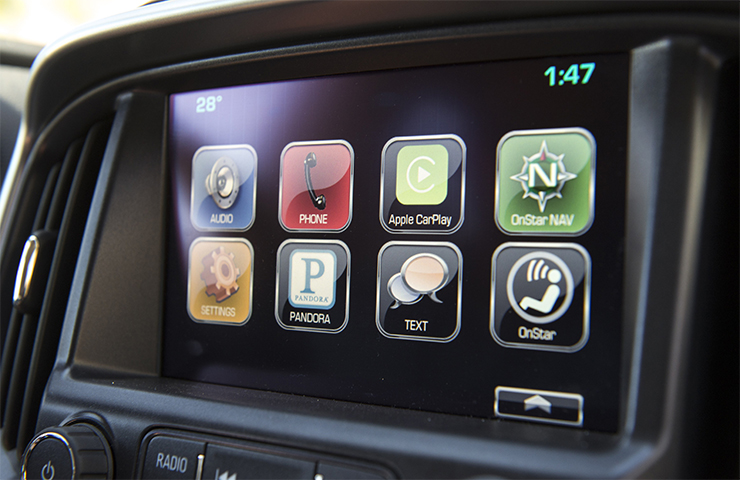
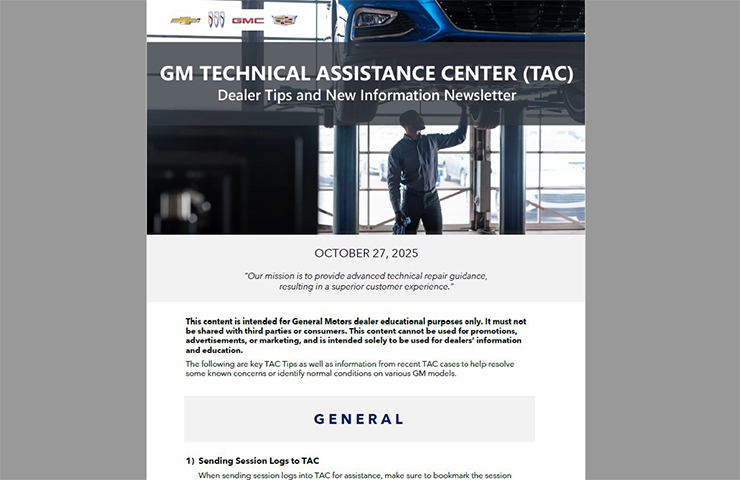
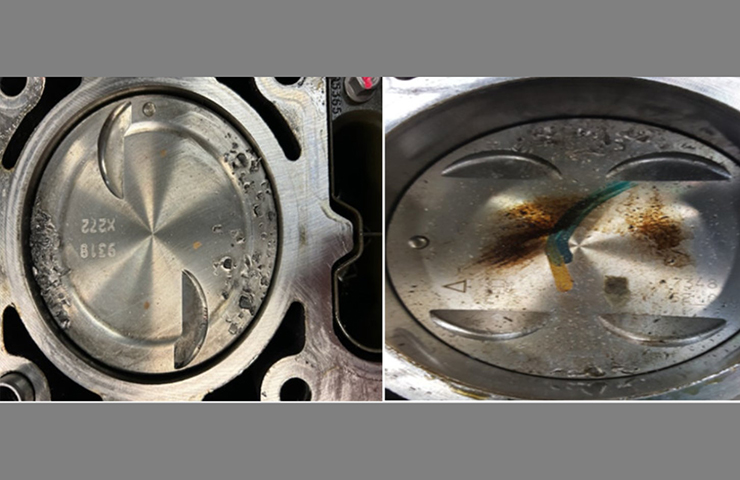


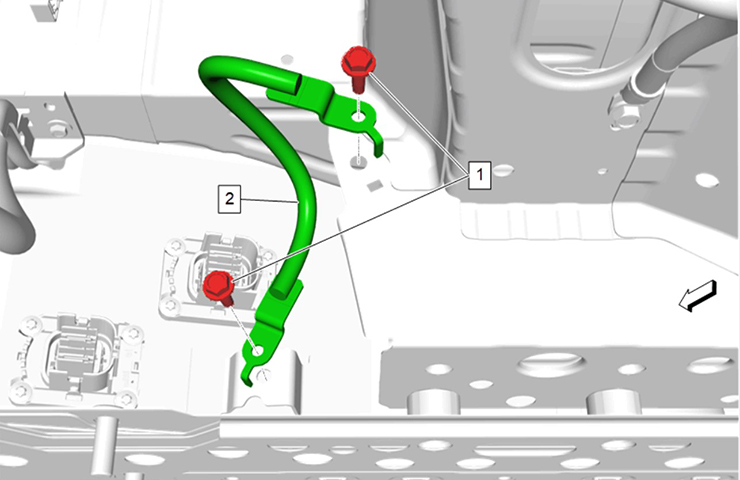
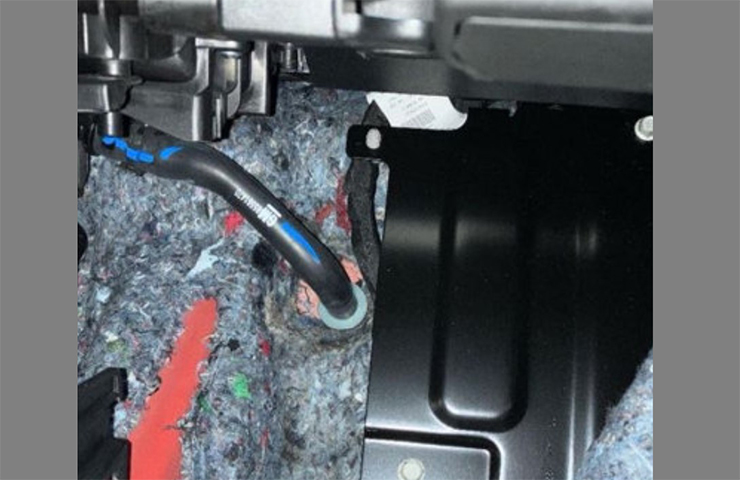










The TFT range is set to match the optimum properties and consistent thermal expansion of DEXRON VI fluid. Measuring the fluid level outside of the specified range may result in an overfilled or underfilled condition that may damage the transmission. The recommended way to raise the fluid temperature is to drive the vehicle with the transmission in manual 2nd gear until the proper temperature is reached. Brake torqueing the vehicle to raise the fluid temperature is not an acceptable method for the FWD 6-speed or 9-speed speed transmission.
“To check the transmission fluid level, the transmission fluid temperature (TFT) must be 185–203°F”. Why does the fluid have to be scalding hot for a level check? When its 50 degrees outside you cant get the fluid to that temperature even with a 20 minute test drive since it doesnt have a thermostat. You have to power brake it to get it that hot (which GM often frowns upon). Figure it out